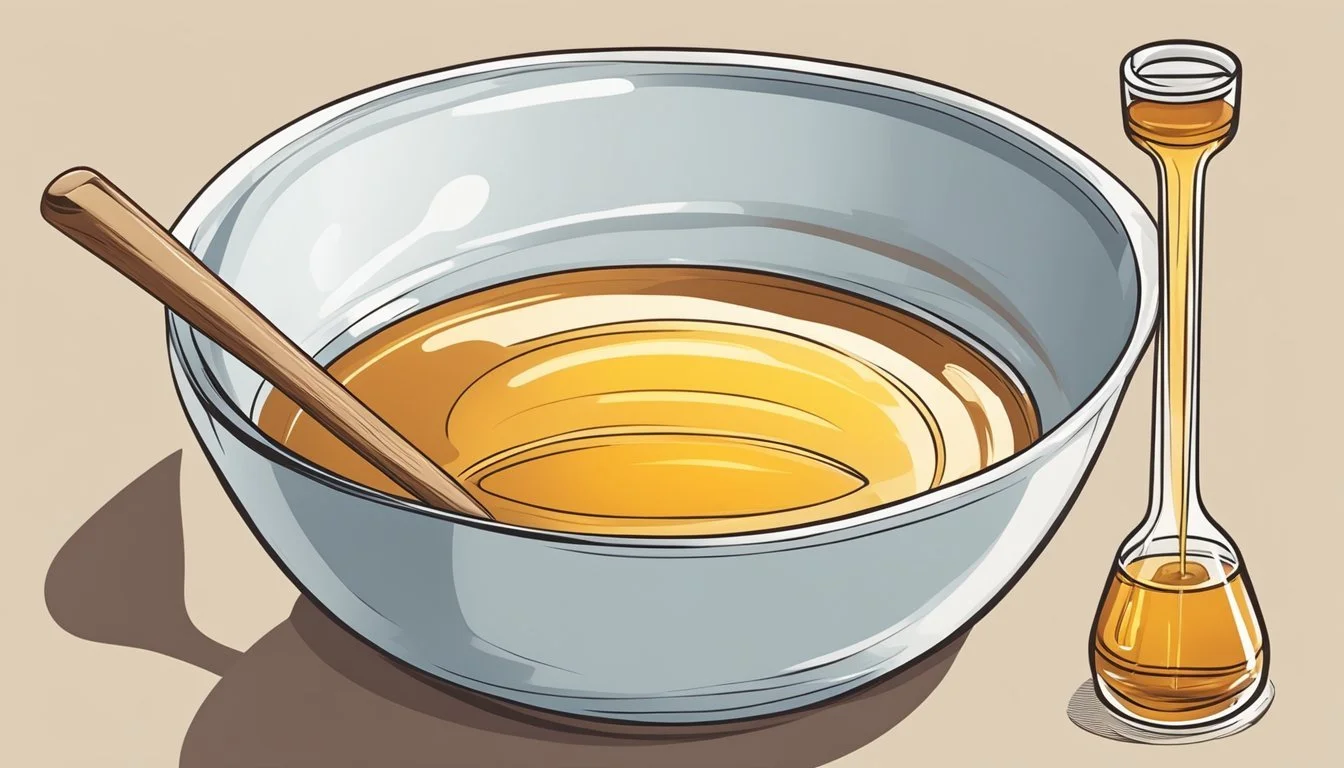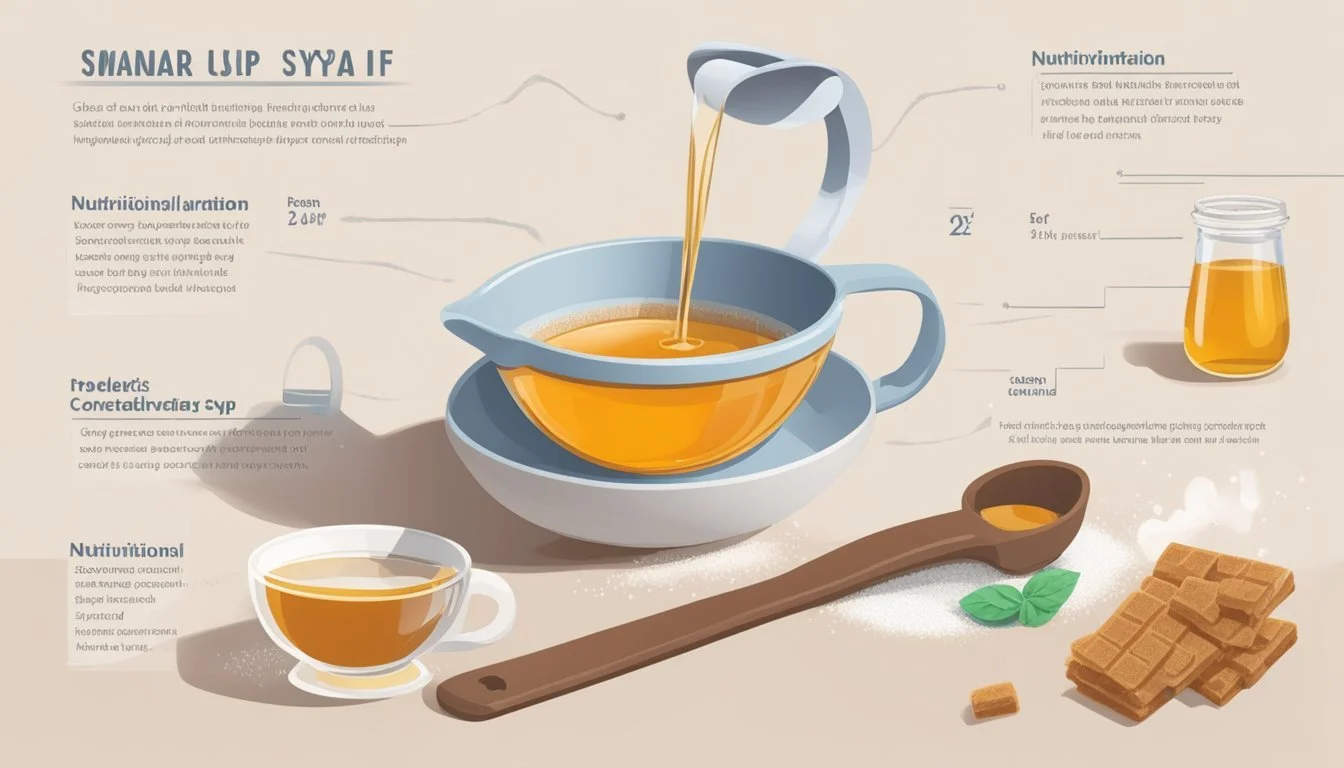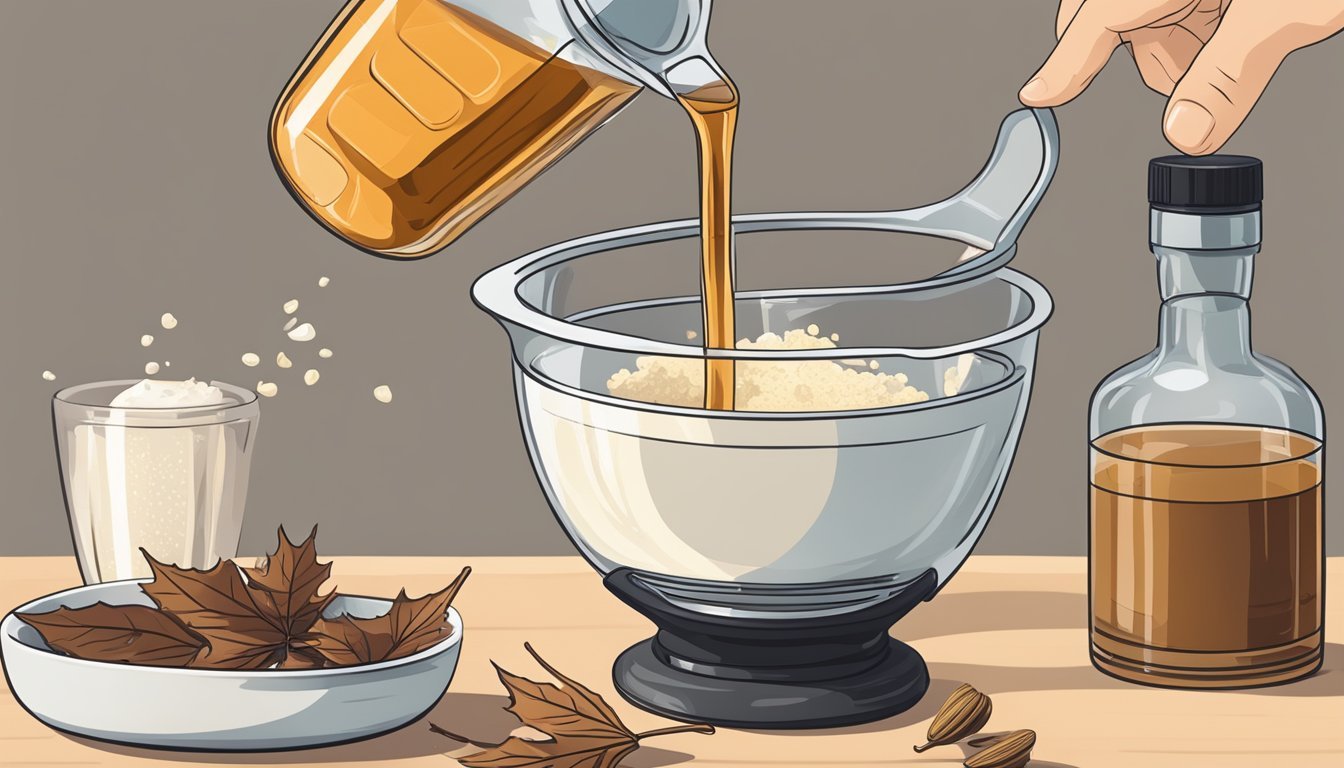How to Measure Ingredients for Homemade Pancake Syrup
Precision for Perfect Sweetness
Creating homemade pancake syrup is both an art and a science. It involves combining specific ingredients in precise measurements to ensure the perfect balance between sweetness and consistency. The secret to mastering this concoction lies in the careful measurement of ingredients such as sugars and water, which form the base of the syrup. Understanding the ratio and the cooking process is essential to achieve a syrup that can complement the pancakes, rather than overpower them.
Measuring ingredients accurately is crucial when making homemade pancake syrup. It ensures consistency in flavor and thickness with each batch. Cooks must pay attention to the type of sugars used, as brown and white sugars contribute to the syrup's color and depth of flavor. A reliable set of measuring tools, such as cups and spoons, is indispensable for this task. Furthermore, the use of liquid measures for water and any extracts ensures precision in the syrup's final texture.
By using meticulous measurement techniques, one can tailor the syrup to suit personal preferences or dietary requirements. This adaptability is a significant advantage of crafting pancake syrup at home. With the ability to adjust the sweetness and thickness, home cooks are empowered to create a syrup that resonates with their unique taste preferences, providing a delightful homemade touch to their breakfast table.
Understanding Pancake Syrup Ingredients
Crafting homemade pancake syrup successfully involves a delicate balance of sugar, liquid, and flavorings. Knowing the function and proper measurement of each ingredient ensures a sweet syrup with the ideal consistency and taste.
Role of Sugars in Syrup
Sugars are integral to homemade pancake syrup, providing sweetness and body. Granulated sugar, also known as white sugar, dissolves easily and is often used as a base. Brown sugar contributes a deeper flavor due to the presence of molasses. In some recipes, pure maple syrup or corn syrup can be added for their distinct flavors and properties. Fructose or liquid sweeteners such as molasses may also be used for varied sweetness profiles.
Sugar Type Characteristics Notes White Sugar Neutral sweetness, fine grain Dissolves quickly. Brown Sugar Deep flavor, moist Adds moisture, has molasses. Corn Syrup Inhibits crystallization Offers smooth texture. Maple Syrup Natural flavor Often preferred for purity. Molasses Rich, robust flavor May impart heavier taste notes.
Liquids for Syrup Consistency
The chosen liquid determines the syrup's consistency. Water is commonly used, but milk can add a creamier texture. The liquid is combined with sugar and brought to a boil then reduced to a simmer to achieve the desired thickness.
Boiling is the initial step to dissolve sugars properly.
Simmering helps reach the perfect viscosity for the syrup.
Flavor Enhancers and Spices
Flavorings such as vanilla or maple extract enhance the syrup's taste, while spices like cinnamon, nutmeg, or a cinnamon stick provide warmth and complexity. The careful addition of these elements can transform a simple syrup into an extraordinary complement to pancakes.
Essential Extracts: Vanilla extract or maple extract for classic flavors.
Optional Spices: Cinnamon or nutmeg can be steeped or added during simmering.
Syrup Making Techniques
Making pancake syrup from scratch involves precise heat control to transform simple ingredients into a rich, flavorful topping. Understanding the importance of boiling and simmering, as well as using the correct utensils and equipment, is critical for achieving the desired syrup consistency.
Importance of Boiling and Simmering
When one makes pancake syrup, the process begins with boiling—quickly heating the mixture of water and sugars in a medium saucepan on the stovetop. This step requires continuous stirring to dissolve the sugars and to prevent burning. Once boiling, the mixture should form large bubbles across the surface, indicating that it is time to simmer.
To simmer, one must lower the heat to a point where small bubbles gently break the surface. This lower, more controlled heat allows the syrup to slowly reduce and thicken without caramelizing too quickly. The cook time for simmering can vary: it is roughly 5 minutes for a thinner syrup and closer to 10 minutes for a thicker consistency.
Cooking Utensils and Equipment
Using the appropriate cooking utensils and equipment can affect the outcome of homemade pancake syrup:
Medium Saucepan: A sturdy medium saucepan is essential for even heat distribution. Materials like stainless steel or anodized aluminum are preferred.
Whisk or Spoon: To ensure sugar granules dissolve effectively during the boil, a whisk or a wooden spoon should be used for steady stirring.
Equipment checklist:
Medium saucepan
Measuring cups and spoons
Whisk or wooden spoon
The prep time for gathering ingredients and utensils is minimal, but attentiveness during the cooking process is crucial. One must remain watchful as the syrup transitions through stages from boiling to simmering and eventually to becoming adequately thickened.
Pancake Syrup Recipes and Variations
Creating homemade pancake syrup is surprisingly simple, often requiring just a handful of staple kitchen ingredients. This section outlines the fundamental process for crafting a basic syrup and suggests diverse flavor customizations suitable for a range of breakfast treats, from classic buttermilk pancakes to oatmeal and Belgian waffles.
Basic Homemade Pancake Syrup Recipe
The essential pancake syrup can be made with just three ingredients: water, white sugar, and brown sugar. Here's a quick guide:
Ingredients:
1 cup water
1/2 cup brown sugar
1/2 cup white sugar
Instructions:
Combine water and sugars in a saucepan.
Whisk over medium heat until sugars dissolve.
Bring to a boil and cook to desired consistency: 5 minutes for thin syrup, 10 minutes for thicker syrup.
Cooking time will affect the syrup's thickness, so one can adjust it according to whether they desire a light drizzle for fluffy pancakes or a thicker sauce for oatmeal.
Customizing Your Syrup Flavors
A basic syrup recipe can be the foundation upon which one builds a variety of flavor profiles. Customization is key:
Caramel Syrup: Extend the cooking process to deepen the color and add a rich caramel flavor that complements chocolate chip pancakes.
Fruit Syrups: Stir in fruit jams or fresh fruit reductions to serve over buttermilk or cottage cheese pancakes.
Decadent Spreads: Incorporate peanut butter or Nutella for a distinctly indulgent topping.
Concocting a homemade syrup enables experimenting with different add-ins to elevate the breakfast experience. Whether seeking the simplicity of an easy recipe or the gourmet touch of a unique topping, these syrups will enhance any pancake, waffle, or morning dish.
Nutritional Information and Dietary Considerations
When making homemade pancake syrup, it's essential to consider the nutritional content and how it fits into various dietary needs. This section provides specific information on calorie content and suggests modifications for healthier alternatives.
Caloric Content of Syrup
Homemade pancake syrup mainly consists of sugars—granulated and brown—contributing to its high caloric content. A typical serving of homemade syrup can contain:
Calories: Approximately 200-300 calories per 1/4 cup
Carbohydrates: Around 50-75 grams
Sugars: High levels due to the presence of granulated and brown sugars
It's important to note that the listed nutritional values can vary based on the ingredients and their quantities.
Dietary Adjustments for Health
For individuals monitoring their intake of saturated fat, cholesterol, and sodium, homemade pancake syrup can be adjusted by excluding butter, which reduces fat content. For those requiring gluten-free options, ensure all ingredients are certified gluten-free. Here are suggested modifications:
Sugar Alternatives: Use sugar substitutes like stevia or erythritol to lower the calorie count.
Fat Reduction: Omit butter or use low-fat alternatives for less saturated fat.
Nutrient Enhancement: Add a dash of cinnamon or nutmeg to introduce trace amounts of calcium, potassium, and iron without significantly altering the calorie content.
Protein: To add protein, one could incorporate nuts or nut butter into the syrup, adjusting the consistency accordingly.
These adjustments help tailor homemade pancake syrup to various dietary requirements without compromising taste.
Serving and Storing Pancake Syrup
Preparing homemade syrup requires attention to detail, not only in the making but also in the serving and storing of the final product. One must consider the consistency and flavor preservation to ensure the breakfast experience is enhanced whether the syrup is drizzled over pancakes, waffles, or French toast.
Optimal Ways to Serve Syrup
For an indulgent breakfast, homemade syrup should be served warm. Gently heat the desired amount of syrup before drizzling it over pancakes, waffles, or French toast to unlock its full flavor. When presenting, one can use a pitcher or a syrup dispenser for even pouring. Serving it alongside fresh fruit complements the sweetness and adds a refreshing element to the meal.
Preservation and Storage Tips
Homemade syrup should be kept in an airtight container to retain its quality and freshness. The container can be a glass jar or a plastic bottle with a tight seal. To extend the shelf life, store it in the refrigerator; this slows down microbial growth and preserves the syrup's flavor. A properly stored syrup can last several weeks. Remember to always use clean utensils to serve the syrup to prevent contamination.
Storing in Refrigerator: Up to 4 weeks in an airtight container.
Room Temperature: Not recommended for long-term storage to prevent spoilage.
When storing, one should note the following:
Always let the syrup cool to room temperature before sealing and placing it in the refrigerator.
Label the container with the date of creation to keep track of its longevity.
Social Engagement and Sharing
Creating homemade pancake syrup is an excellent opportunity to engage with a community of food enthusiasts. Whether one is hosting a brunch (What wine goes well with brunch?) or making breakfast for kids, sharing the experience can inspire others and generate meaningful connections.
Engaging with Your Community
A food creator can share their homemade pancake syrup journey on social media platforms such as Facebook, Instagram, and Pinterest. These platforms allow users to post photos, recipes, and tips that can encourage others to try making their own syrup. For instance:
Instagram: One can share visually appealing images of the syrup drizzled over pancakes with the hashtags #HomemadeSyrup and #BreakfastIdeas. They might even post step-by-step stories to guide followers through the syrup-making process.
Platform Feature Ideas for Engagement Instagram Feed Post high-quality photos of the syrup with recipes Instagram Stories Share interactive polls or Q&A about syrup preferences Instagram Reels Create short videos showcasing the syrup preparation
Facebook: Food creators can post longer form content, such as detailed recipes or articles about their homemade syrup. They can also join Facebook groups dedicated to brunch enthusiasts or making breakfast fun for kids.
Content Type Ways to Share Facebook Posts Share experiences and ask for feedback Facebook Groups Start discussions or share tips in community groups
Pinterest: Pinterest serves as a resource for users looking for breakfast recipes and ideas. Creators can upload pins with enticing images of their syrup and link back to their blogs or recipe pages. They can create themed boards such as "Kid-Friendly Breakfasts" or "Brunch Ideas."
Pinterest Content Purpose Pins Route potential audience to their recipe page Boards Organize content thematically for users
Creators should include a "follow me" call-to-action in their posts to build a dedicated audience eagerly awaiting their next creation. The food creator's approach should remain confident and knowledgeable, while also maintaining a clear, neutral tone to ensure that information is accessible to all levels of cooking enthusiasts. They should focus on fostering a community around the love for homemade products and the joy of a well-crafted breakfast.
Final Thoughts on Homemade Pancake Syrup
Making homemade pancake syrup is a rewarding process that allows for customization and control over the ingredients used. When measuring ingredients, accuracy is key to achieving the desired flavor and consistency. Bakers should use proper measuring tools such as measuring cups for liquids and spoons for smaller quantities.
Ingredients proportion is crucial:
Liquid ingredients: Use a clear measuring cup and check at eye level.
Sugar: Spoon into measuring cup until heaping, then level with a straight edge.
Consistency varies by preference:
Thinner syrup: Boil ingredients for a shorter period.
Thicker syrup: Extend the boiling time.
When preparing syrup, the cook must remain attentive. Stirring occasionally helps prevent burning and ensures sugars are fully dissolved. Once ready, storage is a vital step - the syrup should be kept in an airtight container in the refrigerator to maintain freshness.
Key tips for storage:
Let syrup cool before transferring to a container.
An airtight container is essential to prevent contamination and preserve flavor.
People should enjoy experimenting with flavors, perhaps by adding maple extract or vanilla to enhance the taste. They may also create seasonal variations using spices such as cinnamon or nutmeg. The satisfaction of serving homemade syrup tailored to one's own taste preference is a delightful finale to the pancake-making experience.
Additional Resources and References
When seeking further information on measuring ingredients for homemade pancake syrup, one may consider the following sources as trustworthy references:
Books: Cookbooks by renowned chefs or volumes focused on breakfast recipes may provide in-depth guidance on ingredient measurement and syrup-making techniques.
Example Title: The Breakfast Bible by Seb Emina
Example Title: Joy of Cooking by Irma S. Rombauer
Online Tutorials: Food bloggers and culinary websites often share detailed processes for making pancake syrup at home, including accurate measurement tips.
Notable Site: Serious Eats
Notable Site: Rocky Hedge Farm
Cooking Classes: Local cooking schools or online courses might offer classes specifically tailored to breakfast items, where hands-on instruction ensures proper measurement.
Example Provider: Sur La Table
Example Provider: MasterClass
Kitchen Tools Manufacturers: Many brands offer their own recipes and tips, which often accompany measuring tools tailored for baking and cooking.
Brand Type of Tool OXO Liquid Measuring Cups Pyrex Measuring Jugs
Culinary Forums: Forums such as eGullet or ChefTalk can provide peer-reviewed advice and experiences shared by both professional chefs and home cooks.
Crafting homemade pancake syrup requires attention to detail. The aforementioned resources can significantly aid in acquiring the necessary knowledge.









